A Controversial Blueprint for Human Consciousness
“The Changing Images of Man” emerged in 1974 from the Stanford Research Institute as one of the most provocative and influential documents in the history of futures research. This comprehensive report, later published as a book, represented an unprecedented attempt to map humanity’s psychological and mythological evolution at a time of profound civilizational crisis. The document’s creation involved a remarkable confluence of military industrial research, consciousness studies, mythological scholarship, and intelligence community interests that would fundamentally shape how we understand human potential and societal transformation. Under the direction of Willis Harman and O.W. Markley, a team of researchers synthesized insights from depth psychology, systems theory, anthropology, and emerging consciousness research to create what they viewed as a roadmap for humanity’s next evolutionary leap.
The report’s significance extends far beyond its original policy oriented intentions. It represents a unique historical moment when establishment institutions seriously engaged with countercultural insights, when hard science met ancient wisdom, and when pragmatic futurists embraced mythological thinking. The document serves as a bridge between the rationalist planning paradigms of the post war era and the more holistic, consciousness centered approaches that would emerge in subsequent decades. Its influence can be traced through the human potential movement, the rise of transformational psychology, the development of scenario planning methodologies, and contemporary discussions about collective trauma and societal transformation.
The SRI Report: Origins and Institutional Connections
The Stanford Research Institute Context
The Stanford Research Institute occupied a unique position in the American research landscape when it produced “The Changing Images of Man.” Founded in 1946 as an offshoot of Stanford University, SRI had evolved by the 1970s into one of the premier think tanks serving government, military, and corporate clients. The institute’s work spanned an extraordinary range, from hard engineering problems to explorations of human consciousness that pushed the boundaries of conventional science. During the Cold War era, SRI became a crucial node in the network of institutions exploring not just technological superiority but also the frontiers of human capability and consciousness.
The institute’s involvement in consciousness research was neither accidental nor peripheral to its mission. Programs exploring remote viewing, psychokinesis, and altered states of consciousness received substantial funding from intelligence agencies seeking any possible advantage in the geopolitical struggle. The Stargate Project, which investigated psychic phenomena for intelligence applications, operated out of SRI for years with CIA and Defense Intelligence Agency support. This created an institutional culture where rigorous scientific methodology coexisted with openness to phenomena that mainstream academia often dismissed. The researchers who worked on “The Changing Images of Man” operated within this unique environment where the boundaries between conventional and unconventional research were deliberately blurred.
The timing of the report’s creation in the early 1970s is crucial to understanding its content and approach. This period witnessed the confluence of multiple crisis points: the Vietnam War had shattered American confidence, the environmental movement had revealed the dark side of industrial progress, the oil crisis demonstrated the fragility of technological civilization, and the counterculture had fundamentally challenged established values. Within SRI, researchers recognized that these interconnected crises demanded more than technical solutions; they required a fundamental reexamination of the images and myths that guided human behavior. The institute’s position at the intersection of establishment power and alternative thinking made it uniquely suited to undertake this ambitious project.
Willis Harman and the Noetic Sciences
Willis Harman stands as one of the most fascinating figures in the history of consciousness research and futures studies. An electrical engineer by training who became a professor at Stanford, Harman underwent a profound personal transformation that led him to explore the intersection of science, spirituality, and social change. His journey from conventional academic to consciousness researcher mirrors the larger cultural shifts of his era. Harman’s involvement with “The Changing Images of Man” represented the culmination of years of thinking about how scientific materialism limited human potential and how new paradigms might emerge.
Harman’s approach to the report reflected his conviction that humanity stood at an evolutionary threshold comparable to the shift from medieval to modern consciousness. He argued that the mechanistic worldview inherited from the Scientific Revolution, while enormously productive, had reached its limits and was generating more problems than it could solve. Environmental destruction, nuclear weapons, social alienation, and spiritual emptiness all stemmed from an image of humanity as separate from nature and from each other. Harman believed that only a fundamental shift in consciousness, comparable to the Renaissance or Enlightenment, could address these interconnected crises.
After his work on “The Changing Images of Man,” Harman would become president of the Institute of Noetic Sciences, an organization founded by Apollo astronaut Edgar Mitchell after his transformative experience of seeing Earth from space. IONS represented an attempt to study consciousness and human potential with scientific rigor while remaining open to phenomena that challenged materialist assumptions. Under Harman’s leadership, IONS attracted funding from diverse sources, including wealthy individuals interested in consciousness research, foundations supporting alternative approaches to science, and, according to some researchers, government agencies continuing their interest in consciousness related phenomena. The institute became a meeting ground for scientists, mystics, psychologists, and futurists, all united by the belief that consciousness played a more fundamental role in shaping reality than conventional science acknowledged.
Harman’s vision extended beyond academic research to practical application. He believed that understanding consciousness could lead to new approaches in education, healthcare, business, and governance. His concept of “global mind change” suggested that shifts in collective consciousness preceded and enabled major social transformations. This idea, central to “The Changing Images of Man,” proposed that changing the stories and images people used to understand themselves would naturally lead to changes in behavior and social structures. Harman’s work thus bridged the gap between inner transformation and outer social change, making him a pivotal figure in what would later be called the “consciousness revolution.”
Publishing Networks and Intelligence Connections
The dissemination and influence of “The Changing Images of Man” reveals a complex web of connections between publishing, intelligence services, and consciousness research that characterized the Cold War era. The report’s journey from classified government contractor document to influential public text illuminates how ideas about human transformation circulated through various power networks. Understanding these connections helps explain both the report’s influence and the controversies that continue to surround it.
Robert Maxwell’s Pergamon Press played a significant role in publishing and distributing materials related to consciousness research and futures studies during this period. Maxwell, a Czech born British media proprietor, built a publishing empire that specialized in scientific and technical publications. His connections to intelligence services, including documented relationships with Mossad, MI6, and allegedly the CIA and KGB, made Pergamon Press a unique conduit for information that straddled the boundaries between open scientific discourse and classified research.
The intelligence community’s interest in consciousness research and human potential stemmed from multiple motivations. The Cold War created pressure to explore any avenue that might provide strategic advantage, no matter how unconventional. The Soviet Union’s reported psychic research programs spurred American agencies to investigate similar phenomena. Beyond immediate tactical applications, some within the intelligence community recognized that understanding consciousness and human potential had implications for social control, propaganda, and long term strategic planning. Documents released through the Freedom of Information Act reveal extensive CIA interest in consciousness research, including programs at SRI and other institutions.
The relationship between consciousness researchers and intelligence agencies was complex and often contradictory. Many researchers genuinely believed in the transformative potential of their work and saw government funding as a means to pursue important investigations that conventional sources wouldn’t support. Others worried about the militarization of consciousness research and the potential for their discoveries to be used for manipulation rather than liberation. This tension runs through “The Changing Images of Man,” which simultaneously envisions human liberation through expanded consciousness and provides a framework that could be used for sophisticated forms of social engineering.
The publishing networks that distributed consciousness research materials in the 1970s and 1980s created an informal but influential community of researchers, writers, and activists. Small presses, academic publishers, and alternative media outlets circulated ideas that mainstream publishers wouldn’t touch. This underground network included everyone from serious scientists exploring anomalous phenomena to New Age enthusiasts promoting questionable theories. The lack of clear boundaries between rigorous research and speculation both energized the field and made it vulnerable to criticism. “The Changing Images of Man” occupied an ambiguous position within this ecosystem, carrying the authority of a major research institution while promoting ideas that challenged conventional thinking.
Campbell’s Mythological Framework Within the Report
The Hero’s Journey as Societal Transformation
“The Changing Images of Man” revolutionary application of Joseph Campbell’s hero’s journey to collective transformation represents one of its most significant theoretical innovations. The report’s authors recognized that Campbell’s monomyth, traditionally applied to individual psychological development, could illuminate the process by which entire civilizations undergo fundamental change. This insight transformed the hero’s journey from a tool for understanding personal growth into a framework for comprehending and potentially guiding societal evolution.
Call to Transformation
The first stage, the Call to Transformation, manifests collectively when a society’s dominant paradigm begins generating more problems than it solves. The report identified multiple indicators that industrial civilization had reached this point: environmental degradation that threatened the biosphere, weapons capable of ending human civilization, economic systems generating extreme inequality, and a pervasive sense of meaninglessness despite material prosperity. These interconnected crises constitute what the report termed a “problematique,” a complex of problems that couldn’t be solved within the existing paradigm. The call to transformation isn’t a single dramatic event but an accumulating pressure that makes change inevitable.
Resistance and Crisis
Resistance and Crisis, the second stage, reflects society’s natural tendency to defend established patterns even when they’ve become destructive. The report analyzed how institutions, ideologies, and individual identities all become invested in maintaining the status quo. Educational systems continue preparing students for an industrial economy even as that economy transforms. Political systems designed for slower, more localized decision making struggle with global, rapidly evolving challenges. Economic theories based on unlimited growth clash with planetary boundaries. This resistance isn’t simply stubborn conservatism but reflects the deep psychological difficulty of abandoning worldviews that have provided meaning and structure. The report suggested that this resistance phase could last decades and would likely intensify as the old paradigm’s failures became more obvious.
The Threshold Guardian
The Threshold Guardian stage identifies the forces actively maintaining the failing system. These guardians include not just obvious power holders like corporations and governments but also conceptual frameworks, professional identities, and social habits that perpetuate destructive patterns. The military industrial complex guards against changes that might reduce conflict. Academic disciplines protect their boundaries against transdisciplinary insights. Consumer culture resists shifts toward voluntary simplicity. The report emphasized that threshold guardians aren’t necessarily malevolent; they often sincerely believe they’re protecting valuable achievements. Understanding their motivations and fears becomes crucial for navigating past them without destructive confrontation.
Descent into Chaos
Descent into Chaos describes the breakdown phase when old structures can no longer maintain coherence. The report distinguished between creative and destructive chaos, suggesting that some degree of dissolution is necessary for new patterns to emerge. This phase might manifest as economic disruption, political instability, environmental crises, or social fragmentation. The danger lies not in chaos itself but in the temptation to impose premature order, often in authoritarian forms. The report warned that societies experiencing this phase might embrace simplistic solutions or charismatic leaders promising to restore a mythologized past. Navigating chaos requires maintaining faith in the transformative process while resisting both despair and false certainty.
Meeting the Mentor
Meeting the Mentor represents the emergence of new guiding principles adequate to contemporary challenges. Unlike individual hero’s journeys where mentors are often personified, societal mentors might appear as new scientific insights, spiritual teachings, social movements, or technological capabilities. The report identified several potential sources of transformative wisdom: ecological science revealing nature’s interconnectedness, Eastern philosophies offering alternatives to Western dualism, indigenous knowledge systems demonstrating sustainable relationships with nature, and emerging technologies enabling new forms of organization. The challenge lies in distinguishing genuine wisdom from attractive but ultimately inadequate alternatives.
Trials and Revelations
Trials and Revelations encompass the experimental phase where societies test new forms of organization, meaning making, and relationship. The report anticipated that this phase would involve numerous experiments, many of which would fail. Alternative communities, new economic models, innovative governance structures, and novel spiritual practices all represent trials through which humanity might discover viable futures. Each experiment, whether successful or not, provides crucial learning. The report emphasized that this experimental phase requires tolerance for diversity and failure, qualities often lacking in societies seeking quick solutions to complex problems.
Death and Rebirth
Death and Rebirth marks the fundamental paradigm shift where new images of human nature and purpose crystallize. This isn’t merely adopting new policies or technologies but fundamentally reimagining what it means to be human. The report suggested this might involve shifting from seeing humans as separate from nature to understanding ourselves as part of Earth’s living system, from competitive individualism to collaborative interdependence, from material accumulation to spiritual development, from national identification to planetary citizenship. This death and rebirth process occurs at multiple levels simultaneously: individual consciousness, social institutions, and cultural narratives all undergo transformation.
Return with the Elixir
Return with the Elixir describes how transformed consciousness manifests in new social forms. The elixir isn’t a single solution but a new capacity for addressing challenges creatively and holistically. Societies that successfully navigate transformation develop what the report called “self reflective social systems” capable of conscious evolution. Rather than being driven by unconscious patterns or narrow interests, these societies can deliberately choose their direction based on expanded awareness of consequences and possibilities. The return phase involves integrating transformative insights into practical institutions and daily life.
Master of Both Worlds
Master of Both Worlds represents the mature phase where societies maintain dynamic balance between seemingly opposite qualities. The report envisioned cultures that could be both technologically sophisticated and ecologically wise, individually empowering and communally supportive, rationally effective and intuitively guided, locally rooted and globally conscious. This mastery doesn’t mean perfection but rather the capacity to navigate paradox and maintain creative tension between complementary opposites. Societies achieving this stage would model what human civilization could become, inspiring further transformation elsewhere.
Archetypal Images and Collective Transformation
The report’s analysis of archetypal images shaping human self understanding represents a profound synthesis of Jungian psychology, cultural anthropology, and futures research. These images function as deep templates organizing perception, motivation, and behavior at both individual and collective levels. By identifying dominant images and tracing their evolution, the report provided a framework for understanding how societies transform at the most fundamental level.
Homo Faber
Homo Faber, man as toolmaker and controller of nature, emerged with the Scientific Revolution and reached its apotheosis in industrial civilization. This image celebrates human ingenuity, promotes technological solutions to all problems, and sees nature as raw material for human use. The Homo Faber archetype enabled extraordinary achievements: modern medicine, space exploration, global communication systems, and unprecedented material prosperity for some. However, the report identified this image’s shadow side: environmental destruction, alienation from nature, reduction of quality to quantity, and the illusion that technical fixes can solve problems created by consciousness. The report traced how this image, once liberating humanity from fatalistic acceptance of natural limits, had become a prison preventing recognition of ecological interdependence and spiritual dimensions of existence.
Homo Economicus
Homo Economicus, the rational economic actor, represents a narrowing of human nature to fit market ideology. This image reduces complex motivations to profit maximization, interprets all relationships through exchange metaphors, and elevates efficiency above other values. The report analyzed how this archetype, useful for certain economic analyses, had colonized domains where it didn’t belong: education reduced to job training, healthcare commodified, relationships evaluated by cost benefit analysis, and nature valued only for “ecosystem services.” The dominance of Homo Economicus creates societies where everything has a price but nothing has inherent value, where growth becomes an end in itself regardless of what’s growing, and where success is measured solely by material accumulation.
Homo Systemicus
Homo Systemicus emerges as humans recognize their embeddedness in complex systems: ecological, social, technological, and psychological. This image represents an advance over simplistic mechanical thinking, acknowledging feedback loops, emergent properties, and unintended consequences. Systems thinking reveals how individual actions aggregate into collective patterns, how everything connects to everything else, and how linear solutions often create new problems. The report saw this archetype as transitional, necessary for moving beyond reductionism but insufficient for full transformation. Homo Systemicus can still treat systems mechanistically, optimizing without questioning purposes, managing complexity without addressing meaning, and maintaining anthropocentric assumptions while using ecological language.
Homo Spiritualis
Homo Spiritualis represents the recovery and transformation of humanity’s spiritual dimension within a contemporary context. This image doesn’t require rejecting science or reason but rather expanding beyond their limitations to include intuition, meaning, purpose, and connection to transcendent dimensions of existence. The report carefully distinguished authentic spirituality from regressive fundamentalism or escapist fantasy. Homo Spiritualis seeks direct experience rather than dogmatic belief, embraces both ancient wisdom and contemporary insight, and grounds spiritual development in service to collective transformation. This archetype enables humans to find meaning beyond material success, develop wisdom alongside knowledge, and experience unity while respecting diversity.
Homo Integralis
Homo Integralis, the integrated human, represents the report’s vision of humanity’s next evolutionary stage. This image transcends and includes previous archetypes, maintaining their valuable aspects while overcoming their limitations. Homo Integralis uses tools wisely without being defined by them, participates in economic life without being reduced to it, understands systems while experiencing wholeness, and develops spiritually while remaining grounded in practical reality. This integration occurs not through compromise or averaging but through achieving a higher synthesis that transforms apparent oppositions into creative polarities. The report suggested that individuals embodying this archetype already exist and that their numbers would grow as transformation progressed.
The process of archetypal transformation involves more than intellectual understanding. The report emphasized that images operate below conscious awareness, shaping perception before thought begins. Changing dominant images requires experiential practices, cultural narratives, educational approaches, and social structures that embody new possibilities. Art, ritual, story, and direct experience all play crucial roles in archetypal transformation. The report analyzed how various cultural movements and practices were already beginning to shift collective images: environmental activism embodying humanity’s connection to nature, holistic health practices integrating body mind spirit, alternative communities experimenting with new social forms, and consciousness research revealing untapped human potentials.
Jungian Psychology and Collective Consciousness
The Collective Unconscious in Societal Transformation
Carl Jung’s concept of the collective unconscious provides the psychological foundation for understanding how “The Changing Images of Man” envisions societal transformation occurring at depths beyond rational planning or political reform. The report’s authors recognized that Jung’s insights into the psyche’s deeper layers offered crucial keys for comprehending how entire civilizations might shift their fundamental orientations. The collective unconscious, containing archetypal patterns shared across humanity, operates as a kind of species memory that both preserves ancient wisdom and enables evolutionary leaps. Understanding its dynamics becomes essential for anyone seeking to facilitate or comprehend large scale social change.
The collective unconscious manifests through symbols, dreams, myths, and spontaneous behaviors that emerge independently across cultures. The report traced how certain symbols and themes were appearing globally in the 1970s: mandalas representing wholeness in both Eastern spirituality and Western psychology, ecological imagery of Earth as living organism, visions of technological and spiritual integration, and dreams of catastrophe followed by renewal. These emerging patterns suggested that humanity’s collective psyche was already beginning to process the necessity for transformation. The report interpreted phenomena like the simultaneous emergence of environmental movements worldwide, the attraction to Eastern spirituality in the West, and the youth rebellion against industrial values as surface manifestations of deeper psychic shifts.
Jung’s understanding of how the collective unconscious communicates through compensation provided another crucial insight. When consciousness becomes too one sided, the unconscious produces compensatory images and impulses to restore balance. The report applied this principle to civilization itself, suggesting that industrial society’s extreme extraversion, rationalism, and materialism were generating powerful compensatory movements toward introversion, intuition, and spirituality. This wasn’t simply pendulum swing but potentially spiral dynamics, where the compensation could lead to a higher integration rather than mere reversal. Understanding compensation helps explain why the most technologically advanced societies often produce the strongest countercultural movements.
The autonomous nature of collective unconscious processes means that societal transformation can’t be simply engineered or controlled. The report emphasized that attempts to manipulate these deep processes often backfire, producing resistance or distortion. Instead, transformation requires what Jung called “conscious collaboration” with unconscious processes. This involves recognizing emerging patterns, providing channels for their expression, and creating conditions where new consciousness can develop organically. The report suggested that this understanding should inform approaches to education, governance, and social change, favoring facilitation over manipulation, emergence over imposition.
The collective unconscious also contains what Jung termed the “two million year old human” evolutionary wisdom accumulated over humanity’s entire history. The report argued that this deep wisdom included knowledge about living in harmony with nature, creating meaningful communities, and connecting with transcendent dimensions of existence. Industrial civilization’s rupture with this wisdom created not just practical problems but profound psychic disturbance. The transformation envisioned by the report involved not romantic return to the past but creative integration of ancient wisdom with contemporary capabilities. This required developing what the report called “future primitive” consciousness, technologically sophisticated yet grounded in perennial wisdom.
Shadow Work on a Civilizational Scale
The report’s application of Jung’s shadow concept to entire civilizations represents one of its most psychologically sophisticated and practically important insights. Just as individuals repress qualities incompatible with their ego ideal, societies collectively deny aspects of reality that contradict their dominant self image. These civilizational shadows don’t disappear but operate unconsciously, creating the very problems the society claims to oppose. Understanding and integrating collective shadows becomes essential for genuine transformation rather than mere problem displacement.
Environmental destruction represents perhaps the most obvious shadow of industrial progress. The same system that prides itself on rational efficiency and technological mastery produces irrational waste and ecological chaos. The report traced how the myth of human separation from nature enabled treating the biosphere as mere resource while denying the consequences. Rivers poisoned by the chemicals that enable modern life, forests destroyed for temporary profit, and atmosphere altered by the very energies powering civilization all represent return of the repressed. The environmental crisis forces confrontation with denied interdependence, revealing that human cleverness operating without ecological wisdom becomes self destructive stupidity.
Alienation emerges as the shadow of individualism, one of modern civilization’s most cherished values. The same cultural forces that liberated individuals from oppressive traditions also severed connections essential for psychological health. The report analyzed how competitive individualism, while enabling certain freedoms, creates epidemic loneliness, meaninglessness, and mental illness. The pursuit of individual success often produces collective failure, as everyone optimizing for personal gain creates systems where no one truly thrives. This shadow manifests in rising suicide rates amid material prosperity, in social media that promises connection while delivering isolation, and in the paradox of feeling alone in crowded cities.
Meaninglessness haunts material prosperity as its inevitable shadow. Societies that reduce human purpose to production and consumption discover that meeting material needs doesn’t satisfy deeper hungers. The report traced how the “disenchantment of the world” that enabled scientific progress also drained life of inherent meaning. When efficiency becomes the highest value, everything efficient becomes valueless. When everything can be bought, nothing seems worth having. This shadow appears in the desperate search for purpose through consumption, in the epidemic of depression in wealthy societies, and in the susceptibility to extremist ideologies that promise meaning through destruction.
Technocratic control represents the shadow of rational organization. The same systematic approaches that enable complex societies to function can become totalitarian systems reducing humans to data points. The report presciently anticipated how information technologies designed for liberation could enable unprecedented surveillance and manipulation. The drive to optimize everything creates systems that optimize for system preservation rather than human flourishing. This shadow manifests in bureaucracies that perpetuate problems they’re meant to solve, in algorithms that shape behavior while claiming neutrality, and in the reduction of citizens to consumers and data sources.
The process of collective shadow integration requires more than intellectual recognition. The report emphasized that shadows carry tremendous energy that must be channeled constructively rather than simply suppressed. Environmental movements that embrace both technological innovation and deep ecology, economic experiments balancing individual initiative with community welfare, and spiritual practices grounding transcendence in embodied life all represent shadow integration efforts. The report warned against both denying shadows and being overwhelmed by them, advocating for the difficult middle path of conscious integration.
Individuation of Humanity
The report’s boldest psychological proposition suggests that humanity as a whole might be undergoing a collective individuation process analogous to Jung’s concept of individual psychological development. This perspective reframes the global crisis as necessary for species maturation rather than simply catastrophe to be avoided. Understanding collective individuation provides both hope and guidance for navigating transformational challenges.
The parallels between individual and collective individuation are striking. Just as individuals must separate from parental matrices to develop autonomy, humanity has had to separate from unconscious embeddedness in nature to develop self awareness. The scientific revolution and Enlightenment represent this necessary but dangerous separation phase. Just as individuals often inflate after achieving independence, humanity inflated with technological power, imagining itself as master of the universe. And just as personal inflation leads to inevitable deflation and crisis, humanity’s overreach triggers ecological and social crises that force recognition of limits and interdependence.
The encounter with the shadow, essential for individual individuation, occurs collectively as societies confront denied aspects of their development. The report interpreted various crises as shadow eruptions forcing integration: environmental destruction revealing denied dependence on nature, social fragmentation exposing the shadow of competitive individualism, and weapons of mass destruction manifesting the shadow of power without wisdom. These encounters, while painful and dangerous, create opportunities for developing more complete and integrated consciousness. The question becomes whether humanity can integrate these shadows consciously or will be overwhelmed by them.
The process of integrating opposites, central to Jung’s individuation concept, appears globally as humanity struggles to balance seemingly contradictory needs and values. The report identified key polarities requiring integration: individual freedom and collective responsibility, technological power and ecological wisdom, rational analysis and intuitive understanding, material development and spiritual growth, cultural diversity and human unity. These aren’t problems to be solved by choosing sides but creative tensions to be maintained dynamically. Societies achieving such integration would model new possibilities for human organization.
The Self, in Jungian terms, represents the integrated totality transcending and including all partial identifications. The report suggested that humanity might be developing toward a collective Self awareness recognizing both unity and diversity, both human uniqueness and embeddedness in larger wholes. This wouldn’t mean homogenization but rather what the report called “unity in diversity,” where different cultures and approaches contribute to a larger symphony. The emergence of global consciousness through communication technologies, environmental awareness revealing planetary interdependence, and growing recognition of humanity’s common fate all suggest movement toward collective Self realization.
The role of individuals in collective individuation becomes crucial. The report emphasized that collective transformation doesn’t happen abstractly but through individuals who embody new consciousness. These “imaginal cells” to use the report’s biological metaphor function like the cells in a caterpillar that carry the butterfly’s pattern, initially appearing as foreign bodies but eventually transforming the entire organism. Individuals who integrate opposites in their own lives, who develop transpersonal consciousness while remaining grounded, and who embody future possibilities in present action become channels through which collective transformation occurs.
Digital Networks and McLuhan’s Global Village
The Electronic Nervous System
Marshall McLuhan’s prescient vision of electronic media creating a “global nervous system” profoundly influenced how “The Changing Images of Man” understood the role of communication technologies in consciousness transformation. The report recognized that McLuhan’s insights went far beyond predicting technological change to illuminating how new media fundamentally alter human consciousness and social organization. Electronic communication doesn’t simply transmit information faster; it creates new forms of awareness, relationship, and possibility that make previously unimaginable transformations both necessary and possible.
The concept of media as extensions of human faculties provided a framework for understanding how electronic technologies might enable collective consciousness. Just as the wheel extends the foot and the telescope extends the eye, electronic media extend the nervous system itself beyond individual boundaries. The report traced how this extension progresses: telegraph enabling instant long distance communication, telephone adding voice to create more intimate connection, radio broadcasting one to many relationships, television adding visual dimension to create shared experiences, and computers beginning to enable many to many interactions. Each development doesn’t just add capability but transforms consciousness itself, creating new ways of being human.
McLuhan’s distinction between hot and cool media illuminated how different technologies shape participation and consciousness differently. The report applied this framework to understand why electronic media were creating such profound cultural upheaval. Print, a hot medium requiring little participation to complete its meaning, encouraged detached, linear, analytical thinking. Television and electronic media, being cooler and requiring more participation, were reawakening pattern recognition, intuitive understanding, and participatory consciousness. This shift explained many phenomena puzzling linear thinkers: why youth raised on television thought differently than print oriented parents, why image and feeling were becoming more powerful than argument and logic, and why holistic approaches were gaining credibility against reductionist methods.
The speed of electronic communication creates what McLuhan called “the instantaneous world” where everything happens at once. The report analyzed how this temporal compression was forcing humanity to develop new cognitive and social capacities. When effects become visible immediately rather than gradually, when local actions have global consequences in real time, and when feedback loops accelerate beyond traditional management speeds, old forms of organization and decision making become obsolete. The report suggested that humanity was being forced to develop what it called “real time wisdom” the capacity to respond appropriately to rapidly changing, complexly interconnected situations without the luxury of extended deliberation.
The retribalization effect of electronic media, where humanity returns to more tribal forms of consciousness but at a planetary scale, offered both promise and peril. The report recognized that electronic media were breaking down the boundaries, hierarchies, and sequential thinking patterns that print culture had created. This created possibilities for new forms of community and consciousness but also dangers of regression to pre rational tribalisms. The challenge involved achieving what the report called “transcendent tribalism” maintaining the intimacy and participation of tribal consciousness while preserving the achievements of rational civilization and extending identity to planetary scale.
From Gutenberg to Global Brain
The report’s analysis of humanity’s evolution through communication technologies provided a framework for understanding both where we’ve been and where we might be going. Each major shift in communication technology correlated with profound changes in consciousness, social organization, and human possibility. By understanding these patterns, we might better navigate the transition to whatever follows electronic culture.
Oral culture, humanity’s original communication matrix, created consciousness characterized by participation, presence, and pattern recognition. The report drew on anthropological research showing how oral peoples experience different relationships to time, space, identity, and knowledge than literate peoples. In oral culture, knowledge lives in community memory, truth emerges through dialogue, and identity remains embedded in collective stories. The report suggested that while we can’t return to pure orality, electronic media were reawakening oral culture’s participatory qualities at new levels of complexity. Understanding oral consciousness helps recognize what was lost in the transition to literacy and what might be recovered and transformed.
Written culture’s emergence created the possibility of abstract thought, historical consciousness, and accumulated knowledge beyond any individual’s memory. The report traced how writing enabled law codes, philosophical systems, and religious texts that could maintain consistency across time and space. Writing created the individual mind separate from collective voice, the critical distance necessary for analysis, and the possibility of private thought. These achievements came with costs: separation of knower from known, reduction of multi sensory experience to visual symbols, and the beginning of humanity’s alienation from immediate experience. The report emphasized that transformation didn’t mean abandoning literacy’s gifts but integrating them with other ways of knowing.
Print culture exponentially amplified writing’s effects while adding new dimensions. The report analyzed how print’s reproducibility, standardization, and distribution created modern consciousness: nationalism through vernacular literatures, individualism through private reading, scientific revolution through exact reproduction of diagrams and data, and capitalism through abstract quantification. Print culture reached its apotheosis in industrial civilization, where everything from factory production to educational systems reflected print’s linear, sequential, standardized logic. Understanding print’s deep patterning of consciousness helps explain why electronic media create such disruption; they challenge assumptions so fundamental that most people don’t realize they’re assumptions.
Electronic culture began reversing many of print’s effects while creating entirely new possibilities. The report traced how electronic media’s simultaneity challenges linear thinking, how its global reach undermines nationalism, how its participatory nature questions passive consumption, and how its pattern revealing capacity supports holistic understanding. But electronic culture in the 1970s remained largely one to many broadcasting, still maintaining hierarchies and centralized control. The report presciently anticipated that emerging computer networks might enable something qualitatively different: genuine many to many communication that could support collective intelligence.
Digital culture, barely visible when the report was written, represented the next phase that would fully manifest electronic media’s transformative potential. The report’s authors intuited that networked computers would create possibilities beyond anything McLuhan imagined: not just global nervous system but global brain capable of collective thinking, not just information sharing but collaborative creation, not just communication but communion at planetary scale. They anticipated that digital networks would enable new forms of democracy, economics, education, and spirituality. Their optimism was tempered by recognition that these same technologies could enable unprecedented surveillance and control, making the question of consciousness and values even more crucial.
The evolution toward “global brain” raised profound questions addressed throughout the report. Would collective intelligence emerge automatically from connected networks, or would it require deliberate cultivation? How could humanity develop shared wisdom while preserving cultural diversity? What governance structures could manage planetary systems without becoming totalitarian? How could technology serve consciousness rather than replacing it? The report suggested that answering these questions required not just technological innovation but psychological and spiritual development. The global brain would only be as wise as the consciousness of its constituent parts.
Van Gennep and Turner: Ritual Process in Social Transformation
Liminality and Cultural Change
Arnold van Gennep’s groundbreaking analysis of ritual process, particularly his identification of the liminal phase, provided “The Changing Images of Man” with a powerful framework for understanding societal transformation. The report recognized that van Gennep’s three phase model of separation, liminality, and reincorporation, originally developed to understand individual rites of passage, illuminated the deeper structure of how entire cultures navigate fundamental change. This anthropological insight transformed how the report’s authors understood the chaos and uncertainty of their historical moment, reframing crisis as necessary transition rather than simple breakdown.
The separation phase in cultural transformation manifests as the breakdown of established patterns that no longer serve evolving needs. The report identified multiple indicators that industrial civilization had entered this separation phase: youth rejecting their parents’ values and lifestyle, professionals leaving established careers to seek meaning, communities experimenting with alternative economic and social arrangements, and spiritual seekers abandoning traditional religions for direct experience. This separation wasn’t mere rebellion but intuitive recognition that old forms had become constraining shells preventing further growth. The report emphasized that separation, while necessary, creates profound disorientation as individuals and groups lose the reference points that previously provided identity and direction.
Liminality, the threshold phase between what was and what will be, emerged as the report’s central metaphor for humanity’s current condition. In this betwixt and between state, old structures have dissolved but new ones haven’t yet crystallized. The report brilliantly applied van Gennep’s insight that liminal periods are characterized by ambiguity, paradox, and potential. Normal categories break down, hierarchies flatten or invert, and previously unthinkable possibilities emerge. The 1960s and 1970s displayed classic liminal characteristics: authority questioned at every level, boundaries between categories blurring, explosion of experimentation in every domain, and simultaneous feelings of liberation and terror. The report suggested that understanding liminality helps navigate its challenges without either trying to retreat to false security or leaping prematurely to inadequate new forms.
The power and danger of liminality stem from its fundamental ambiguity. The report analyzed how liminal conditions activate both creative and destructive potentials. When social structures dissolve, profound innovations become possible: new forms of relationship, revolutionary insights, creative breakthroughs, and spiritual openings. But the same conditions that enable creativity also risk chaos, violence, and regression. Without containing structures, destructive impulses can run wild. Without shared meanings, communication breaks down. Without stable identities, psychological fragmentation threatens. The report emphasized that conscious navigation of liminality requires maintaining creative tension between openness and boundaries, innovation and wisdom, individual freedom and collective coherence.
The temporal dimension of cultural liminality differs radically from individual rites of passage. While personal transitions might last days or weeks, civilizational transformations extend across generations. The report suggested humanity had entered a liminal phase that could last decades or even centuries. This extended liminality creates unique challenges: how to maintain coherence without fixed structures, how to raise children in perpetual transition, how to make decisions without stable frameworks, how to preserve valuable achievements while remaining open to transformation. The report proposed that developing “liminal competence” the ability to thrive in ambiguity and transition would become an essential capacity for individuals and institutions.
Reincorporation, the final phase where new patterns stabilize, remained largely speculative in the report’s analysis. The authors recognized they were writing from within liminality, unable to clearly see what new forms would emerge. However, they identified characteristics that post liminal culture might display: dynamic stability rather than static structures, conscious evolution rather than unconscious drift, unity in diversity rather than homogenization, and wisdom traditions integrated with scientific knowledge. The report emphasized that reincorporation wouldn’t mean returning to fixed patterns but establishing what they called “open structures” capable of continuous adaptation while maintaining coherence.
Communitas and Anti Structure
Victor Turner’s elaboration of van Gennep’s framework, particularly his concepts of communitas and anti structure, provided the report with crucial insights into how transformation occurs at the social level. Turner’s recognition that liminality generates unique forms of human relationship and organization helped explain many phenomena emerging in the 1960s and 1970s that conventional sociology struggled to understand. The report applied Turner’s ideas to illuminate how new social possibilities emerge from the breakdown of established structures.
Communitas, the profound sense of connection and equality that emerges among people sharing liminal experience, appeared throughout the countercultural movements of the era. The report traced how communitas manifested in rock festivals where hundreds of thousands experienced temporary dissolution of normal social boundaries, in encounter groups where executives and housewives met as equal human beings, in communes where people attempted to live beyond nuclear family limitations, and in spiritual communities where seekers from different backgrounds found common ground. This wasn’t mere social bonding but ontological recognition of shared humanity beneath social roles. The report suggested that experiencing communitas created lasting transformation in participants, making it impossible to fully return to previous patterns of separation and hierarchy.
The distinction between different types of communitas helped the report analyze various social experiments’ successes and failures. Spontaneous communitas, emerging unpredictably in moments of crisis or celebration, provides powerful but unsustainable peak experiences. Ideological communitas attempts to institutionalize the spontaneous experience through rules and structures, often destroying what it seeks to preserve. Normative communitas develops sustainable practices that maintain communitas qualities within necessary structures. The report observed how many 1960s experiments failed by trying to maintain spontaneous communitas indefinitely or imposing ideological structures that killed spontaneity. Learning to cultivate normative communitas became crucial for creating sustainable alternatives to hierarchical organization.
Anti structure, the dissolution or inversion of normal social patterns during liminal phases, creates space for fundamental reorganization. The report analyzed how anti structural movements weren’t simply destructive but cleared ground for new growth. The carnival tradition of medieval Europe, where social hierarchies temporarily inverted, provided historical precedent for understanding contemporary phenomena. The report traced anti structural elements in various movements: feminism challenging patriarchal structures, environmentalism questioning human dominance over nature, psychedelic culture dissolving ego boundaries, and alternative economics experimenting beyond capitalism and socialism. These movements didn’t simply oppose existing structures but explored what might lie beyond structure itself.
The relationship between structure and anti structure emerged as dialectical rather than oppositional. The report drew on Turner’s insight that healthy societies require both: structures providing stability and continuity, anti structural moments enabling renewal and transformation. Problems arise when either pole dominates completely. Pure structure becomes rigid mortification, preventing adaptation. Pure anti structure becomes chaotic dissolution, preventing coherent action. The report suggested that humanity’s challenge involved developing new forms of social organization that maintained dynamic balance between these polarities. This might involve regular renewal rituals, institutional mechanisms for transformation, and cultures comfortable with paradox.
The role of liminal specialists those who guide others through transformation became crucial in the report’s vision. Traditional societies had shamans, priests, and elders who understood liminal dynamics and could safely conduct others through dangerous transitions. Modern society largely lacks such guides, leaving individuals and groups to navigate transformation without maps or mentors. The report identified emerging liminal specialists: therapists trained in transformational psychology, facilitators skilled in group dynamics, artists creating new mythologies, and scientists exploring consciousness. Developing and supporting such specialists would become essential for managing cultural transformation without catastrophic breakdown.
The Metamodern Synthesis
Beyond Postmodern Fragmentation
Although the term “metamodern” wasn’t yet coined when “The Changing Images of Man” was written, the report anticipated many themes that would later characterize metamodern sensibility. The synthesis of modern progress narratives with postmodern critique, the oscillation between sincerity and irony, and the attempt to construct new meanings while acknowledging their provisional nature all appear throughout the report. This proto metamodern approach offered a way beyond both modern naivety and postmodern paralysis, suggesting possibilities for reconstructing meaning and purpose without falling into fundamentalism or relativism.
The report acknowledged postmodern insights about the constructed nature of reality, the role of power in shaping knowledge, and the dangers of grand narratives. The authors recognized that returning to pre modern certainties was neither possible nor desirable. They understood that all images of human nature are partially constructed, serving some interests while marginalizing others. Yet the report refused postmodernism’s tendency toward nihilistic deconstruction. Instead, it proposed what might now be called metamodern reconstruction: consciously creating new narratives and images while remaining aware of their provisional, constructed nature. This approach maintains the critical awareness gained through postmodernism while recovering the capacity for meaning making and collective action.
The oscillation between modern enthusiasm and postmodern skepticism appears throughout the report’s analysis. When discussing human potential, the authors display genuine excitement about possibilities for transformation while acknowledging the dangers of utopian thinking. When proposing new images of human nature, they offer them sincerely while recognizing their partial and evolving character. When analyzing technology’s role, they neither embrace techno utopianism nor fall into neo Luddite rejection. This oscillating sensibility, neither purely modern nor postmodern, creates space for what the report calls “realistic idealism” hope grounded in clear seeing rather than wishful thinking.
The integration of multiple perspectives without reducing them to relativistic equivalence represents another proto metamodern aspect of the report. The authors draw from science and spirituality, Western and Eastern thought, ancient wisdom and contemporary innovation, analytical and intuitive approaches. But this multiplicity doesn’t lead to anything goes relativism. Instead, the report seeks what it calls “convergent validation” where different approaches point toward similar insights. This method acknowledges perspectival truth while maintaining that some perspectives are more comprehensive, generative, or aligned with human flourishing than others.
The report’s approach to progress exemplifies metamodern sensibility by maintaining developmental thinking while abandoning linear progressivism. The authors recognize that movement from one image of human nature to another can represent genuine growth in consciousness and capability. Yet they reject the modern assumption that newer automatically means better or that development follows predetermined stages toward a fixed goal. Instead, they propose spiral dynamics where development includes return and integration, where progress includes regress, and where evolution remains open ended rather than teleologically determined. This nuahttp://metamodernnced understanding of development avoids both modern triumphalism and postmodern flatland.
The commitment to grand narrative with full awareness of its limitations characterizes the report’s metamodern quality. The authors consciously construct a story about humanity’s transformation, knowing that all such stories are partial and potentially dangerous. Yet they recognize that without shared narratives, collective action becomes impossible. The solution involves what might be called “humble grand narratives” stories big enough to inspire and coordinate action while maintaining awareness of their constructed nature and openness to revision. This approach enables meaning and mobilization without fundamentalism or totalitarianism.
New Myths for Digital Age
The report’s recognition that humanity needs new myths adequate to contemporary reality while maintaining connection to perennial wisdom anticipates central metamodern concerns. These new myths must integrate scientific understanding with meaning making capacity, technological power with spiritual depth, and global awareness with local rootedness. The report identifies several emerging mythic patterns that might serve humanity’s transformation while avoiding both regressive traditionalism and rootless futurism.
The myth of Gaia as living system represents a profound reimagining of humanity’s relationship with Earth. This myth integrates scientific discoveries about biospheric self regulation with ancient intuitions about Earth as living being. Unlike traditional myths that might personify Earth as goddess demanding worship, the Gaia myth maintains scientific grounding while recovering participatory relationship. Humans appear not as masters over dead matter but as conscious participants in a living system. This myth enables both rational environmental action and emotional connection to nature. It provides meaning and direction without requiring rejection of scientific method. The report suggests this myth was already emerging through environmental movements and would continue evolving as ecological science deepened.
The myth of humanity as Earth’s nervous system offers a functional mythology bridging technological development with spiritual purpose. Rather than seeing human consciousness as accident or aberration, this myth proposes that humanity serves as the means through which Earth becomes self aware. Our global communication systems, scientific knowledge, and spiritual insights all contribute to planetary awakening. This myth reframes technological development from cancerous growth to organ development, suggesting that properly developed technology could serve biospheric health rather than destroying it. The danger lies in nervous system dominating the body rather than serving it, making wisdom and humility essential. This myth provides direction for technological development while maintaining ecological grounding.
The myth of technology as extension of consciousness rather than replacement for it addresses one of humanity’s central challenges. This myth sees tools and machines not as autonomous forces but as crystallized intention requiring conscious direction. From this perspective, computers extend cognitive capacity, networks extend relational capacity, and media extend perceptual capacity. But extension differs from replacement. The myth emphasizes that technology serves consciousness, not vice versa. This framing enables embracing technological power while maintaining human agency and responsibility. It suggests criteria for evaluating technologies: do they enhance or diminish consciousness, connection, and creativity?
The myth of evolution becoming conscious of itself places humanity’s current crisis in cosmic context. This myth suggests that after billions of years of unconscious evolution, the process has produced beings capable of understanding and consciously directing further development. This creates both unprecedented power and ultimate responsibility. Humans become evolution’s way of transcending blind selection through conscious choice. This myth integrates scientific understanding of evolution with spiritual intuitions about purpose and direction. It provides meaning for existence while maintaining open ended possibility rather than predetermined destination. The report suggests this myth could inspire and guide humanity’s next phase of development.
The integration of multiple mythic streams characterizes the report’s approach to meaning making. Rather than proposing one true myth to replace all others, the report envisions creative synthesis drawing from many sources. Scientific cosmology provides scale and grandeur. Indigenous traditions offer ecological wisdom. Eastern philosophies contribute non dual understanding. Western esotericism supplies transformational practices. Depth psychology reveals mythic patterns. The challenge involves weaving these streams into new patterns serving contemporary needs while respecting their distinct contributions. This mythic bricolage exemplifies metamodern sensibility: constructing meaning from available materials while maintaining critical awareness.
Understanding Current Collective Trauma
Pandemic as Initiation
Writing decades before COVID 19, the report’s framework proves remarkably applicable to understanding pandemic as collective initiation. The virus forced global humanity through classic initiatory phases: sudden separation from normal life, extended liminality of uncertainty and transformation, and challenges of reintegration. Understanding pandemic through initiatory lens reveals deeper patterns and possibilities beyond simple return to previous normal.
The separation phase struck with unprecedented speed and universality. Within weeks, billions experienced simultaneous ejection from familiar routines, spaces, and relationships. Lockdowns created physical separation, but deeper separation occurred from assumptions about security, progress, and control. The illusion of human mastery over nature shattered as microscopic entities brought civilization to its knees. Economic systems presumed permanent revealed shocking fragility. Social patterns considered essential dissolved overnight. This wasn’t gradual transition but traumatic rupture, precisely the kind of severe separation that initiates profound transformation. The report’s framework suggests that such dramatic separation, while painful, creates openings for new consciousness that gradual change cannot achieve.
Liminality characterized the extended pandemic period where nothing felt solid or certain. Classic liminal qualities manifested globally: time distortion as days blurred together, spatial ambiguity as homes became offices became schools, identity confusion as roles and routines dissolved, and radical equality as virus threatened rich and poor alike. The usual markers of progress and achievement became meaningless. Career trajectories halted. Life celebrations postponed indefinitely. Death approached tangibly for everyone. This collective dwelling in uncertainty and ambiguity created precisely the conditions the report identified as necessary for fundamental transformation. Old patterns couldn’t be maintained, forcing experimentation with new ways of being.
The pandemic revealed shadow aspects of modern civilization with stark clarity. Healthcare systems designed for profit rather than health collapsed under pressure. Economic structures prioritizing efficiency over resilience proved catastrophically fragile. Social atomization left millions isolated when connection became survival necessity. Racial and economic inequalities, normally hidden by daily routines, became undeniably visible as differential death rates. Information systems designed for engagement rather than truth spread deadly misinformation. These shadow revelations created what the report would recognize as opportunities for integration, though the pain of recognition made seizure of opportunity far from guaranteed.
Communitas emerged in unexpected ways despite physical separation. Healthcare workers globally experienced profound bonds through shared ordeal. Neighbors who’d never spoken developed support networks. Online communities created new forms of intimacy. The universal experience of vulnerability generated compassion across usual divides. Even brief encounters carried new depth as everyone acknowledged shared fragility. This wasn’t traditional communitas of physical presence but evolved form adapted to digital age. The report’s insight that communitas creates lasting transformation suggests these connections might seed new social patterns beyond pandemic.
The question of reintegration remains open as humanity struggles with what return means when there’s no normal to return to. The report’s framework suggests that successful reintegration requires incorporating transformation rather than attempting restoration. This might mean hybrid work acknowledging life beyond office, healthcare reformed around wellbeing rather than profit, economic systems valuing resilience over efficiency, and social structures supporting connection rather than isolation. The danger lies in premature closure, trying to force return to previous patterns without integrating lessons learned. The opportunity involves conscious creation of new patterns serving life more fully.
Digital Acceleration and Shadow
The pandemic’s acceleration of digital transformation exemplifies how crisis catalyzes changes already latent in systems. The report anticipated that communication technologies would fundamentally reshape human consciousness and social organization, but expected this transformation to unfold gradually over generations. The pandemic compressed decades of digital adoption into months, forcing immediate confrontation with both potentials and shadows of networked existence. This acceleration created a living laboratory for examining the report’s predictions about electronic culture’s effects on human consciousness.
The sudden shift to digital everything revealed technology’s double edged nature with unprecedented clarity. Video conferencing enabled continuity of work, education, and relationships when physical meeting became impossible. Digital platforms allowed cultural events, religious services, and support groups to continue serving human needs. Telemedicine brought healthcare to those who couldn’t travel. Online learning made education accessible globally. These developments validated the report’s vision of technology extending human capacities and enabling new forms of connection. Yet the same acceleration revealed profound shadows that the report also anticipated but perhaps underestimated in their intensity.
Digital fatigue emerged as embodied rebellion against disembodied existence. The report recognized that electronic media could disconnect humans from physical reality, but pandemic’s forced digitalization revealed this danger acutely. Zoom fatigue became universal experience as nervous systems struggled with partial presence, delayed responses, and missing somatic cues. Children failed to thrive in online learning environments lacking physical presence and play. Mental health crises exploded as digital connection proved insufficient replacement for embodied community. These experiences confirmed the report’s warning that technology must serve rather than replace human consciousness and connection. The shadow of digital acceleration appeared as epidemic of disconnection amid hyperconnection.
Surveillance capitalism’s shadow grew monstrous during pandemic as tracking technologies deployed for health became infrastructure for control. The report presciently warned about technology’s potential for totalitarian application, but pandemic created conditions where such applications seemed justified by emergency. Contact tracing, movement monitoring, and health passports normalized surveillance previously unthinkable in democratic societies. Tech companies gained unprecedented data about private lives as everything moved online. Algorithms shaped not just consumption but perception of reality itself as people lived increasingly within filter bubbles. The report’s concern that technology could enable manipulation rather than liberation proved prophetic as information warfare and conspiracy theories proliferated through the same networks enabling connection.
The digital divide revealed technology’s shadow of inequality with brutal clarity. While knowledge workers transitioned to comfortable home offices, essential workers faced disease and death. While wealthy students accessed online learning through personal devices, poor children fell further behind. While developed nations debated vaccine distribution algorithms, developing countries lacked basic digital infrastructure. The report’s vision of technology enabling human potential confronted reality of technology amplifying existing inequalities. This shadow forced recognition that conscious development of technology requires addressing systemic injustices rather than assuming technical solutions automatically serve all humanity.
Yet within these shadows, seeds of integration appeared. The shared experience of digital overwhelm created widespread recognition that human wellbeing requires balance between online and offline existence. Parents discovering their children’s online education began demanding pedagogical reform centering whole child development. Workers experiencing remote collaboration’s benefits while missing in person creativity began envisioning hybrid futures. Communities developing mutual aid networks combined digital coordination with physical care. These experiments in integration suggested possibilities for conscious relationship with technology that the report envisioned: using digital tools to enhance rather than replace human capacities while maintaining awareness of their limitations and shadows.
Climate Crisis as Hero’s Journey
The climate crisis represents humanity’s ultimate hero’s journey, containing all classical elements Campbell identified but playing out at species level with Earth itself at stake. The report’s framework illuminates how climate challenge functions as initiation into new relationship with planet and ourselves. Understanding climate crisis through mythological lens reveals deeper patterns that purely scientific or political analyses miss, while suggesting why transformation proves so difficult despite overwhelming evidence of necessity.
The Call to Adventure has sounded for decades through increasingly urgent scientific warnings. Like classical heroes, humanity initially refused the call, preferring comfortable denial to difficult transformation. The report’s analysis of resistance patterns helps explain this refusal: established interests defending profitable systems, psychological defenses against overwhelming threat, and mythological frameworks that separate humans from nature. Each ignored warning increased eventual challenge’s magnitude. Hurricanes, droughts, fires, and floods serve as what Campbell called “heralds” repeatedly announcing adventure’s necessity. The report would recognize these escalating natural disasters as Earth herself insisting that humanity can no longer refuse transformation.
Crossing the First Threshold requires abandoning the ordinary world of fossil fueled civilization for unknown territory of sustainable existence. This threshold appears insurmountable because it demands not just technical changes but mythological transformation. The report emphasized that dominant images of human nature shape possible actions. As long as humans imagine themselves as separate from and dominant over nature, genuine threshold crossing remains impossible. The heroes who have crossed this threshold, from indigenous water protectors to youth climate activists, demonstrate qualities the report identified as essential: ability to perceive wholeness rather than parts, courage to challenge established powers, and capacity to envision radically different futures.
The Road of Trials manifests as seemingly impossible challenges requiring transformation at every level. Decarbonizing energy systems while maintaining dignified life for billions. Transforming agriculture while feeding growing populations. Redesigning cities, transportation, and industry within decades. Each trial demands not just technical innovation but consciousness change. The report’s insight that external challenges mirror internal transformation proves crucial here. Every external carbon reduction requires internal reduction of greed. Every sustainable technology requires sustaining wisdom. Every policy change requires paradigm change. The trials test not just ingenuity but identity, forcing confrontation with who humans are and might become.
Meeting with the Goddess appears as encounter with Earth as living system rather than resource stockpile. This meeting requires what the report called shift from Homo Economicus to awareness of sacred dimension in nature. Scientists discovering ecosystem complexity, activists feeling Earth’s pain, and artists revealing nature’s beauty all participate in this archetypal encounter. The goddess offers unconditional love but demands recognition and respect. She provides everything needed for transformation but refuses exploitation. This encounter transforms climate action from sacrifice to service, from burden to belonging. The report anticipated that recovering sacred relationship with Earth would prove essential for sustained transformation rather than temporary fixes.
The Ordeal, the hero’s supreme test facing possible annihilation, looms as potential civilizational collapse. The report recognized that transformation often requires dying to old identity before rebirth becomes possible. For humanity, this means releasing attachment to growth without limit, consumption as meaning, and domination as power. The ordeal tests whether humanity can voluntarily relinquish unsustainable patterns or will have them stripped away by ecological breakdown. This mythological perspective reveals why incremental changes feel insufficient; the ordeal demands fundamental death and rebirth, not cosmetic adjustments. Yet the report also emphasized that conscious participation in transformation reduces suffering compared to unconscious resistance.
The Ultimate Boon, should humanity successfully navigate transformation, would be sustainable civilization embodying new relationship between human creativity and natural wisdom. The report envisioned this not as return to pre industrial poverty but as advance to post industrial abundance defined differently. The boon includes technologies harmonizing with rather than destroying ecosystems, economies circulating rather than extracting value, and cultures celebrating rather than consuming life. Most profoundly, the boon would be expanded consciousness recognizing humanity’s role as Earth’s awareness rather than its master. This treasure, once gained, must be brought back to transform the ordinary world.
Future Visioning and Practical Applications
Scenario Planning and Mythological Thinking
The report pioneered integration of rational scenario planning with mythological pattern recognition, creating methodology that honors both analytical and intuitive ways of knowing. This approach recognizes that futures emerge from interplay between measurable trends and immeasurable shifts in consciousness. By combining systematic analysis of driving forces with deep understanding of archetypal patterns, the report offered tools for navigating uncertainty that purely rational planning cannot provide. This methodology becomes increasingly relevant as change accelerates beyond traditional forecasting’s capacity.
Conventional scenario planning, developed by corporations and military strategists, excels at identifying key variables and projecting possible futures based on their interaction. The report incorporated these techniques but added crucial dimension: recognition that human images and myths shape which scenarios become possible. A society imagining itself as separate from nature creates different futures than one experiencing interdependence. A culture valorizing competition generates different possibilities than one celebrating collaboration. The report showed how scenario planning must include not just external variables like technology and resources but internal variables like consciousness and worldview. This expanded methodology enables planning that addresses root causes rather than just managing symptoms.
The identification of archetypal scenarios helped reveal deeper patterns beneath surface variations. The report recognized that certain mythological patterns repeat across scales and contexts: the dying king whose renewal regenerates the kingdom, the wasteland awaiting the grail, the tower whose destruction enables new building. By mapping contemporary possibilities onto these patterns, planners can access wisdom accumulated across millennia of human experience. This doesn’t mean imposing ancient stories on modern situations but recognizing how fundamental patterns manifest in contemporary forms. Understanding archetypal dimensions helps identify leverage points where small changes might catalyze large transformations.
The integration of multiple ways of knowing enriches scenario development beyond what either approach achieves alone. Rational analysis identifies technological possibilities, resource constraints, and demographic trends. Mythological thinking reveals meaning structures, transformation patterns, and consciousness potentials. Emotional intelligence recognizes fears and desires shaping collective choices. Somatic awareness detects what bodies know before minds acknowledge. Spiritual insight perceives possibilities beyond current manifestation. The report demonstrated how combining these ways of knowing creates scenarios that are both rigorously grounded and imaginatively expansive, practically actionable and mythologically meaningful.
The role of participation in shaping scenarios rather than just predicting them distinguished the report’s approach. Traditional planning often assumes observers separate from observed futures, calculating probabilities without acknowledging planners’ role in creating what they envision. The report emphasized that consciousness participates in creating reality, making scenario planning an intervention rather than neutral observation. This recognition transforms planning from passive prediction to active creation. Scenarios become not just possibilities to prepare for but visions to manifest or prevent. This participatory understanding makes ethical dimension of planning explicit: what futures do we want to help create?
The practical application of mythologically informed scenario planning appears in various domains. Organizations use it to navigate transformation by identifying which archetypal phase they’re experiencing and what patterns typically follow. Communities employ it to envision regenerative futures drawing on both data and dreams. Therapists apply it to help clients recognize their life story’s mythological dimensions and consciously author next chapters. Educators use it to prepare students for futures requiring both technical skill and wisdom. The method’s power lies in bridging apparent opposites: honoring ancient wisdom while embracing innovation, maintaining hope while acknowledging difficulty, planning systematically while remaining open to emergence.
Tools for Transformation
The report’s enduring value lies partly in its practical tools for navigating transformation at personal, organizational, and societal levels. These tools integrate insights from depth psychology, systems thinking, and consciousness research into applicable methods for facilitating change. Rather than offering simple techniques, the report provided sophisticated frameworks adaptable to various contexts while maintaining transformational depth. These tools become increasingly relevant as individuals and institutions face unprecedented change.
Mythological Mapping enables individuals and groups to locate themselves within larger transformation stories. This tool involves identifying which phase of the hero’s journey or ritual process currently applies, what challenges and opportunities that phase typically presents, and what practices support successful navigation. For individuals, this might mean recognizing career transition as hero’s journey requiring threshold crossing rather than just job change. For organizations, it could involve understanding restructuring as death rebirth process needing conscious ritual rather than just rational planning. For societies, it means perceiving current chaos as liminal phase requiring new myths rather than just better policies. The mapping process itself creates meaning from confusion and direction from disorientation.
Shadow Integration Practices address both personal and collective dimensions of denied material. The report emphasized that transformation requires facing what individuals and groups refuse to acknowledge about themselves. These practices include structured dialogue processes where organizations safely explore their shadows, creative expressions allowing unconscious material to emerge symbolically, and somatic approaches accessing shadows stored in bodies. For example, environmental organizations might explore their shadow of self righteousness that alienates potential allies. Tech companies could examine their shadow of dehumanization beneath humanitarian rhetoric. Nations would face shadows of historical violence beneath civilized self images. Integration doesn’t mean wallowing in darkness but transforming shadow energy into conscious service.
Ritual Design for Transitions
Ritual Design for Transitions creates conscious containers for navigating change. The report recognized that modern society lacks adequate rituals for major transitions, leaving individuals and groups to navigate transformation without sacred technology humans have developed over millennia. Contemporary ritual design draws on traditional wisdom while addressing current needs. This might include ceremonies marking career transitions that honor grief for what’s ending while opening to new possibility, organizational rituals processing collective trauma before restructuring, or community ceremonies acknowledging ecological grief while committing to regenerative action. Effective rituals combine somatic engagement, symbolic representation, emotional processing, and spiritual opening within structures safe enough to hold intensity.
Story Medicine
Story Medicine works with narrative to heal fragmentation and inspire transformation. The report showed how dominant stories shape perception and possibility, making conscious story work essential for change. This tool includes practices for identifying limiting stories operating unconsciously, recovering empowering stories from personal and cultural history, and creating new stories adequate to contemporary challenges. Individuals might reframe life stories from victim narratives to hero’s journeys. Organizations could shift from mechanical metaphors to living system stories. Cultures would evolve from separation stories to interdependence narratives. Story medicine recognizes that humans are storytelling animals who can only transform within new narrative contexts.
Future Visioning Processes
Future Visioning Processes combine imaginative and practical dimensions to create compelling possibilities. The report emphasized that transformation requires not just problem solving but vision creating. These processes use various methods to access visionary capacity: guided imagery journeys to possible futures, collaborative dreaming where groups build shared visions, back casting from desired futures to identify pathways, and prototyping where visions get tested through small experiments. The key involves engaging whole persons rather than just rational minds, allowing visions to emerge from deeper sources than ego planning. Effective visioning creates what the report called “memories of the future” so vivid they magnetize action.
Council Practice
Council Practice develops collective wisdom beyond individual limitations. Drawing on indigenous council traditions and modern group dynamics, this tool creates containers for emergence of insights no individual possesses. Councils operate through principles like speaking from direct experience, listening with full presence, allowing silence for integration, and trusting collective intelligence. The report recognized that complex challenges require wisdom beyond any expert’s knowledge, emerging through synergy of diverse perspectives. Councils might address organizational challenges, community conflicts, or civilizational questions. The practice develops capacity for what the report termed “group individuation” where collectives achieve wisdom comparable to individuated persons.
The Role of Psychotherapy in Collective Transformation
Jungian psychotherapy’s principles and practices offer essential resources for navigating collective transformation, as the report recognized throughout its analysis. The therapeutic container, designed for individual transformation, provides models scalable to group and societal levels. Understanding how psychotherapy facilitates change illuminates how larger transformations might be consciously supported rather than unconsciously endured. The report positioned therapists as crucial cultural workers helping humanity through its collective individuation process.
Weaving New Images for Humanity’s Future
“The Changing Images of Man” remains remarkably prescient nearly fifty years after its creation, anticipating many dynamics now shaping humanity’s transformation. By weaving together Campbell’s mythological insights, Jung’s depth psychology, McLuhan’s media theory, and anthropological understanding of ritual process, the report created a framework of enduring relevance. Its vision of conscious evolution through transformed images of human nature offers both sobering analysis and genuine hope for navigating contemporary challenges.
The document’s complex institutional history, involving Stanford Research Institute, intelligence agencies, consciousness researchers, and global publishing networks, reflects more than historical curiosity. These connections reveal how new paradigms emerge through unlikely confluences of power, knowledge, and vision. Rather than dismissing these networks as conspiracy or celebrating them uncritically, we might recognize them as shadow and light of how consciousness and power interact in shaping human futures. The report itself demonstrates how transformative ideas can emerge from ambiguous origins and serve purposes beyond their creators’ intentions.
The prescience of the report’s warnings about ecological crisis, technological shadows, and meaning breakdown validates its analytical framework while underscoring urgency of conscious response. Every crisis it anticipated has manifested more intensely than even its authors likely imagined. Climate chaos threatens civilization’s foundation. Digital technology reshapes consciousness in ways both marvelous and monstrous. Traditional meaning structures collapse without adequate replacements. Yet the report’s deeper message concerns not catastrophe but transformation. Each crisis represents what it termed “evolutionary driver” forcing humanity toward new consciousness or extinction.
The integration of mythological and rational approaches modeled by the report offers essential methodology for contemporary challenges. Neither pure rationality nor romantic mythology adequately addresses complexity humanity faces. The report demonstrated how combining analytical rigor with mythological depth, technological sophistication with spiritual wisdom, and practical planning with visionary imagination creates approaches equal to unprecedented challenges. This integration requires not averaging opposites but achieving higher synthesis that includes both while transcending their limitations.
The role of consciousness in shaping reality, central to the report’s thesis, gains empirical support from quantum physics, neuroscience, and systems theory. The recognition that observer and observed co create reality transforms how we approach change. Rather than manipulating external conditions while maintaining unchanged consciousness, transformation requires what the report called “reflexive reconstruction” simultaneously changing world and worldview. This understanding makes inner work inseparable from outer action, personal transformation prerequisite for social change, and consciousness evolution foundation for sustainable futures.
The metamodern moment in which we live exemplifies the report’s vision of moving beyond both modern certainties and postmodern relativism toward integrated consciousness. We witness this in movements that combine ancient wisdom with future technology, in leaders who balance prophetic vision with practical action, and in communities creating alternatives while engaging existing systems. The oscillation between sincerity and irony, construction and deconstruction, hope and realism that characterizes metamodern sensibility enables navigating transformation without falling into fundamentalism or nihilism.
As we face collective traumas of pandemic, climate crisis, digital disruption, and social fragmentation, the report’s framework proves invaluable for understanding these challenges as initiation rather than simple catastrophe. Each crisis forces confrontation with shadows, demands sacrifice of unsustainable patterns, and offers potential for rebirth at higher levels of integration. The question becomes whether humanity will consciously participate in this initiation or unconsciously resist until transformation gets imposed through breakdown. The report’s tools and insights support conscious participation, reducing suffering while maximizing learning.
The hero’s journey now belongs to our entire species, with Earth herself as the kingdom requiring renewal. This journey demands not conquering heroes of old but what the report envisioned as “servant leaders” who facilitate collective transformation. The challenges require not individual brilliance but collective wisdom. The solutions emerge not from expertise but from synergy. The transformation happens not through force but through attraction to possibilities so beautiful they inspire voluntary change. This collective hero’s journey transforms competition into collaboration, domination into partnership, and exploitation into service.
Looking forward, the report’s vision of humanity developing “images of man” adequate to our full potential remains both challenge and inspiration. These new images must integrate our technological powers with ecological wisdom, our individual uniqueness with collective unity, our rational capacities with intuitive knowing, and our material needs with spiritual aspirations. Creating and embodying such images requires precisely the kind of transformational work the report outlined: facing shadows, navigating liminality, integrating opposites, and consciously authoring new stories. This work happens simultaneously at personal, community, and civilizational levels, each supporting and requiring the others.
The ultimate message of “The Changing Images of Man” might be that humanity stands at threshold between adolescence and maturity as a species. Like adolescents, we’ve developed powers beyond our wisdom, creating messes while learning hard lessons. The question is whether we’ll mature quickly enough to survive our own cleverness. The report suggests we can, but only through fundamental transformation in how we understand ourselves and our place in the larger whole. This transformation is underway, messy and magnificent, terrifying and hopeful, destroying old worlds while birthing new ones. Our task involves conscious participation in this great turning, using every tool of transformation available while remaining humble before mystery unfolding through us.
By understanding these frameworks and applying their insights, we equip ourselves to serve as midwives for emerging consciousness. The work is both urgent and eternal, practical and mythological, personal and collective. “The Changing Images of Man” provides maps for territory we must walk ourselves, individually and together. The future depends not on following the report’s specific prescriptions but on embracing its spirit of integral vision, courageous inquiry, and faith in human potential for transformation. In this spirit, we continue the great work of reimagining and recreating what it means to be human in service of all life.
Bibliography
Campbell, Joseph. The Hero with a Thousand Faces. Princeton: Princeton University Press, 1949.
Campbell, Joseph. The Masks of God: Primitive Mythology. New York: Viking Press, 1959.
Campbell, Joseph. Myths to Live By. New York: Viking Press, 1972.
Eliade, Mircea. The Sacred and the Profane: The Nature of Religion. New York: Harcourt Brace, 1959.
Gennep, Arnold van. The Rites of Passage. Chicago: University of Chicago Press, 1960.
Harman, Willis W. Global Mind Change: The Promise of the 21st Century. San Francisco: Berrett-Koehler, 1998.
Harman, Willis W. and O.W. Markley, eds. The Changing Images of Man. Oxford: Pergamon Press, 1982.
Jung, Carl G. The Archetypes and the Collective Unconscious. Princeton: Princeton University Press, 1969.
Jung, Carl G. Man and His Symbols. New York: Dell Publishing, 1964.
Jung, Carl G. Memories, Dreams, Reflections. New York: Vintage Books, 1965.
Jung, Carl G. The Undiscovered Self. New York: Mentor Books, 1958.
Markley, O.W. and Willis W. Harman, eds. Changing Images of Man. Menlo Park: Stanford Research Institute, 1974.
McLuhan, Marshall. The Gutenberg Galaxy: The Making of Typographic Man. Toronto: University of Toronto Press, 1962.
McLuhan, Marshall. Understanding Media: The Extensions of Man. New York: McGraw-Hill, 1964.
McLuhan, Marshall and Quentin Fiore. The Medium is the Massage. New York: Bantam Books, 1967.
Mitchell, Edgar and Dwight Williams. The Way of the Explorer. New York: Putnam, 1996.
Turner, Victor. The Forest of Symbols. Ithaca: Cornell University Press, 1967.
Turner, Victor. The Ritual Process: Structure and Anti-Structure. Chicago: Aldine Publishing, 1969.
Turner, Victor. Dramas, Fields, and Metaphors. Ithaca: Cornell University Press, 1974.




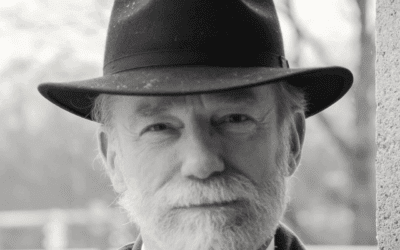
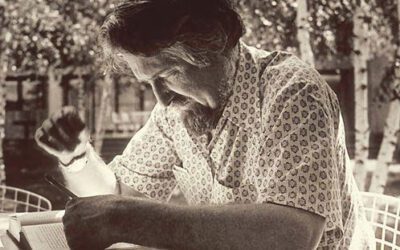
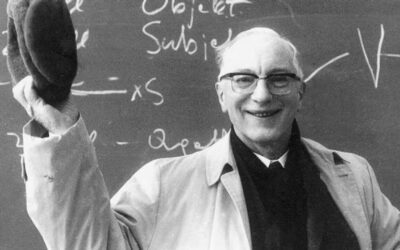

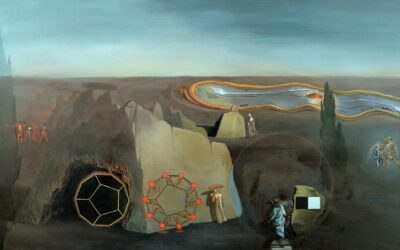
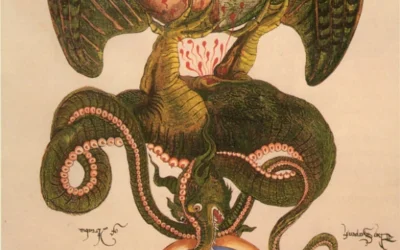
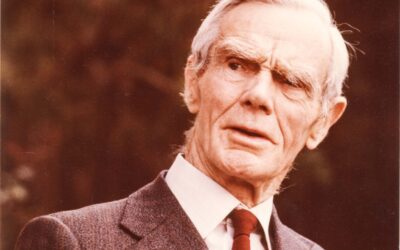


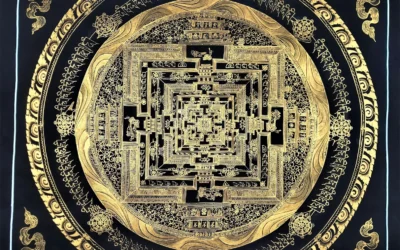
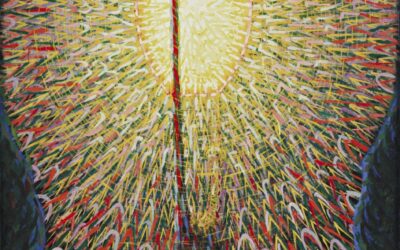


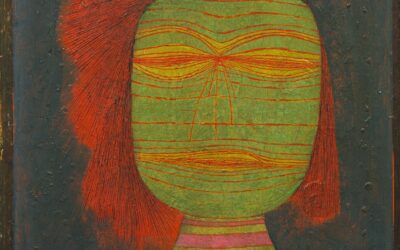
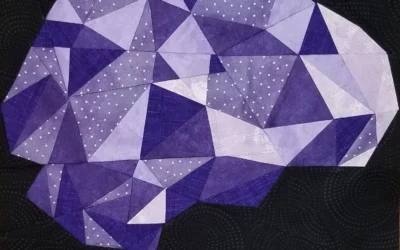
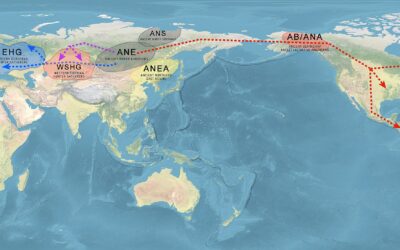

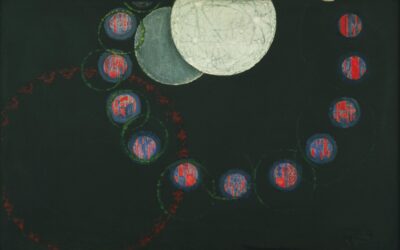

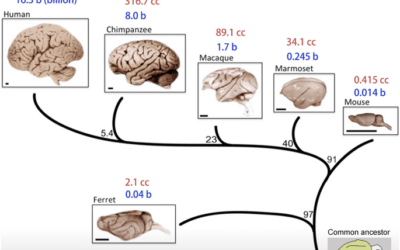
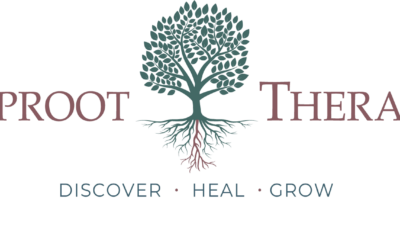

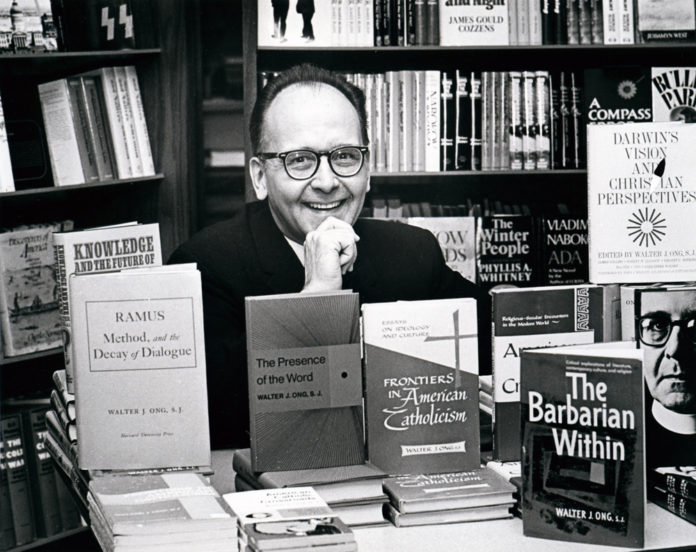

0 Comments